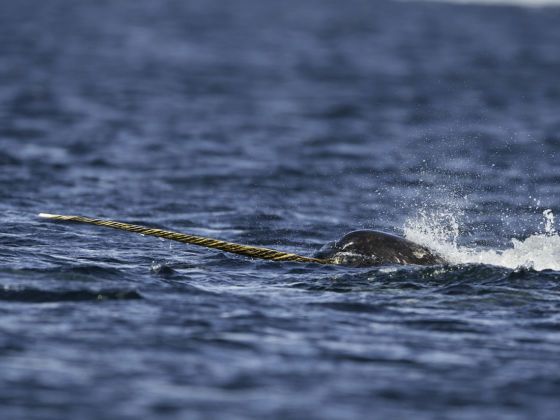With everyone single-mindedly focused on the pandemic, it can be easy to forget about our planet’s other, more pressing issue: climate change. Unlike COVID-19, which will eventually be in the rearview mirror, global warming is here to stay, and its effects will impact not only humans, but the entirety of the world’s ecosystem. A recent study published by The Royal Society found that the world’s narwhal population will decline significantly by the end of this century because of the warming seas.

New Study Says Warming Arctic May Drive Narwhal Population to Extinction
Researchers from Denmark, Canada, Norway, Germany, and the UK analyzed tissue samples from 121 narwhals (some from animals killed by Inuit hunters, some from archaeological digs, and even some from a 1660 Danish throne chair decorated with narwhal tusks) to study the impact of previous climate shifts on narwhal distribution and population, and what it might mean for the future.
The researchers discovered that as the Arctic warms up and sea ice melts, the narwhal habitat will shrink by 25 percent, and the animals will be compelled to move farther north. However, as they crowd into smaller habitats, they will become more vulnerable to encroachment by humans, competition for food, new diseases, and predators like orcas.
A study from April 2020 suggests that the Arctic Ocean may become practically sea‐ice free just before the year 2050. The future of the “unicorns of the sea,” the marine species that is the most vulnerable to the warming sea ice, depends on humans’ ability to reduce greenhouse gas emissions and slow the warming of the planet.
Narwhals are only found in the Atlantic waters of Greenland, Canada, Norway, and Russia, and currently number around 200,000.